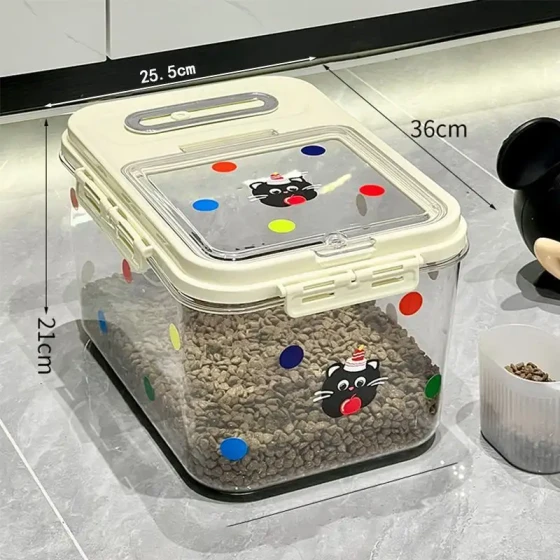Cat Scratch Human Ten Days Will Die_Correct Handling Method After Being Scratched by a Cat Is Very Important
Cat scratch human ten days will die? Don’t believe it! This is the most reliable way to handle a cat scratch.
Many people worry about rabies or other fatal diseases after being scratched by a cat, and there is even a saying that “being scratched by a cat will cause death within ten days,” but this is completely a misunderstanding and unnecessary panic. In fact, the vast majority of cat scratches do not lead to serious consequences, let alone death within ten days. The key is timely and proper treatment after being scratched by a cat to effectively prevent potential health risks.
Being scratched by a cat is a common accident in daily life, especially for households with cats. Although it will not cause death within ten days, cat claws may carry bacteria, and scratches may cause some infections. Understanding these potential risks and knowing how to respond is far more important than living in the fear of false rumors.
What Are the Real Risks of Being Scratched by a Cat?
Compared to the horrifying “ten-day death theory,” the main risks to pay attention to after a cat scratch include:
- Bacterial infection: Cat claws may carry various bacteria, the most common being Bartonella henselae, which causes “cat scratch disease.”
- Tetanus: Any skin wound has the risk of tetanus infection, and cat scratches are no exception.
- Rabies: This is the biggest concern for many, but the risk of rabies transmission through scratching is much lower than through bites and is closely related to the cat’s health status and vaccination.
These risks may sound scary, but remember, they can be prevented and controlled.
Cat Scratch Disease: The Culprit Behind Most Scratches
Many have heard of rabies but may not know much about cat scratch disease. Cat scratch disease is caused by the bacterium Bartonella henselae. This bacterium is commonly found in cat saliva and is transmitted to humans through cat scratches, bites, or licking wounds. According to the U.S. Centers for Disease Control and Prevention (CDC), cat scratch disease is the most common cat-transmitted disease in North America.
Symptoms of Cat Scratch Disease:
- A red papule or blister may appear at the scratch or bite site 3-14 days after injury, occasionally with mild pain.
- The most typical symptom is swelling of the lymph nodes near the wound, which may appear 1 to several weeks after the scratch. The swollen lymph nodes may be slightly painful and range in size from a peanut to a pigeon egg.
- In rare cases, patients may experience low fever, fatigue, headache, or loss of appetite and other systemic symptoms.
Please note, cat scratch disease is usually self-limiting, meaning most cases will heal on their own within weeks to months without treatment. The swollen lymph nodes may persist longer. Only in severe symptoms or in immunocompromised individuals will doctors consider antibiotic treatment. So, although the name sounds frightening, cat scratch disease is far from “death in ten days.”
Rabies: Though Concerning, Scratching Risk Is Relatively Low
Rabies is a serious infectious disease caused by the rabies virus, with a very high fatality rate. The virus is mainly transmitted through the saliva of infected animals, with bites being the most common route. Transmission through scratches is possible but usually occurs when an infected cat licks its paws and then immediately scratches a person. The risk is relatively lower than that of a bite.
Key Factors in Assessing Rabies Risk:
- Animal health status: If the cat that scratched you is a healthy, vaccinated domestic cat and remains healthy during the 10-day observation period (the ten-day observation method), the chance of rabies transmission is negligible.
- Type of wound: Scratches carry lower risk than bites. But if the scratch is deep or breaks the skin, attention is still necessary.
The World Health Organization (WHO) and the Chinese Center for Disease Control and Prevention recommend using the “ten-day observation method” for suspicious cats or dogs. If the animal remains healthy during observation, rabies transmission risk can be ruled out. Of course, for stray cats or animals with unknown health status, or in cases of deep wounds, timely hospital treatment and following doctor’s advice on vaccination is still recommended.
Tetanus: A Threat to Any Wound
Tetanus is caused by Clostridium tetani, a bacterium widely present in soil, dust, and animal feces. The bacteria enter the body through skin wounds, releasing toxins that affect the nervous system and cause muscle spasms. If a cat scratch causes skin breakage, theoretically there is a risk of tetanus infection.
The most effective way to prevent tetanus is timely vaccination or toxoid administration. If you haven’t had a tetanus booster shot in the past 5-10 years, or if the wound is deep or dirty, the doctor may recommend a tetanus vaccine or tetanus immunoglobulin.
Correct Handling After Being Scratched by a Cat Is Key!
Don’t panic! Remember these steps below to greatly reduce infection risk:
- Immediate Washing: Wash the wound thoroughly with soapy water (or other cleansers) and plenty of running water for at least 15–20 minutes. The purpose is to remove as much bacteria and viruses from the wound surface as possible. Imagine giving the wound a “hot bath” to wash away dirt.
- Disinfection: Disinfect the wound using povidone-iodine, alcohol (75% ethanol), or other antiseptics. Note that alcohol may sting but is very effective. Povidone-iodine is less irritating and dark in color, also a good choice.
- Stop Bleeding and Cover: If the wound is small with little bleeding, usually keeping it dry and ventilated is sufficient. For deeper wounds or continuous bleeding, cover with clean gauze or adhesive bandages. Avoid using non-breathable tape or thick dressings; keeping the wound clean and dry aids healing.
- Observe the Animal: If it is a domestic cat, closely monitor its health for the next ten days. If the cat shows abnormalities (e.g., behavioral changes, hydrophobia, paralysis), be highly alert and seek immediate medical attention.
- Assess Risk and Decide Whether to See a Doctor:
- Deep, large wounds with continuous bleeding.
- Scratches from stray cats or cats with unknown health status.
- Signs of infection such as redness, swelling, increased pain, pus (usually appearing days after the injury, not within ten days).
- Fever, swollen lymph nodes, or other systemic symptoms.
- Unclear or over 10 years since last tetanus vaccination.
- Concerns about rabies vaccination, seeking doctor’s advice.
If any of the above conditions occur, be sure to go to the hospital (general surgery, infectious disease department, or emergency) promptly for evaluation and treatment decisions regarding tetanus shots, rabies vaccines, or other therapies. Don’t tough it out due to thinking it’s a minor injury; professional assessment and treatment offer more peace of mind.
How to Prevent Being Scratched by Cats?
- Understand Cat Behavior: Learn their body language to recognize signals when they feel uncomfortable, nervous, or angry (e.g., flattened ears, rapidly swinging tail, hissing).
- Gentle Interaction: Avoid forcibly holding cats, pulling their tails, or disturbing them while sleeping or eating.
- Regular Nail Trimming: Regularly trimming your cat’s claws can significantly reduce the harm from scratches.
- Provide Scratching Posts: Prepare suitable scratching posts to satisfy their natural clawing instincts and reduce scratching furniture or people.
Common Questions and Answers
- Q1: Do I need a rabies vaccine if a cat scratches me and breaks the skin?
- A1: Not all scratches require rabies vaccination. If the scratch is minor without bleeding, or if it’s from a healthy, vaccinated domestic cat and you can perform a ten-day observation, the risk is extremely low. But if the scratch is deep, bleeding, or the cat’s condition is unknown, consult a doctor who will determine if vaccination is necessary. Don’t decide blindly on your own.
- Q2: Is cat scratch disease contagious?
- A2: Cat scratch disease is mainly transmitted to humans through cat scratches, bites, or licking wounds. It is usually not directly contagious between people.
- Q3: How soon after a cat scratch can I tell if there is an infection?
- A3: Local symptoms caused by cat scratch disease (papules) usually appear a few days after the scratch. Lymph node swelling may appear 1 to several weeks later. Signs of bacterial infection (redness, swelling, heat, pain) usually appear within a few days after the scratch. Rabies incubation period is usually 1-3 months, rarely manifesting within ten days.
Summary
“Cat scratch human ten days will die” is an outright rumor, don’t scare yourself anymore! After a cat scratch, the most important thing is to stay calm and immediately wash the wound thoroughly with soapy water and running water, then disinfect. Closely monitor the wound and the cat’s condition. If the wound is deep, shows signs of infection, or you have concerns about rabies risk, be sure to seek medical care promptly and follow professional doctors’ advice. Mastering the correct handling methods allows you to enjoy time with cats with peace of mind.





